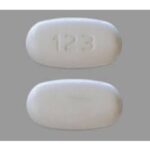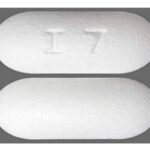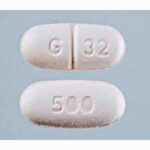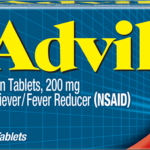What Is A Pill That Has I-2 On It?

The white round pill with the imprint I-2 has been identified as Ibuprofen 200 mg supplied by Perrigo Company. The brown round pill with the imprint I-2 has also been identified as Ibuprofen 200 mg but supplied by Major Pharmaceuticals Inc. In addition the orange, capsule-shaped pill with the imprint I-2 has been identified as Ibuprofen 200 mg. It is supplied by Topco Associates LLC. All three pill have the imprint I-2 and contain Ibuprofen 200 but comes in different colors. It is important to note that not all I-2 Pills contain ibuprofen others contain other active ingredients.
Ibuprofen is a nonsteroidal anti-inflammatory drugs (NSAID), which is a type of medication with analgesic, fever-reducing, and, in higher doses, anti-inflammatory properties. The World Health Organization (WHO) includes ibuprofen on its list of essential medicines. The list states the minimum medical needs for a basic healthcare system. Ibuprofen reduces pain, fever, swelling, and inflammation by blocking the production of cyclooxygenase (COX)-1 and COX-2. The body releases these substances in response to illness and injury.
Why are these medications prescribed?
Prescription ibuprofen is used to relieve pain, tenderness, swelling, and stiffness caused by osteoarthritis (arthritis caused by a breakdown of the lining of the joints) and rheumatoid arthritis (arthritis caused by swelling of the lining of the joints). It is also used to relieve mild to moderate pain, including menstrual pain (pain that happens before or during a menstrual period). Nonprescription ibuprofen is used to reduce fever and to relieve minor aches and pain from headaches, muscle aches, arthritis, menstrual periods, the common cold, toothaches, and backaches. Ibuprofen is in a class of medications called NSAIDs. It works by stopping the body’s production of a substance that causes pain, fever, and inflammation.
How should the medicines be used?
Prescription ibuprofen comes as a tablet to take by mouth. It is usually taken three or four times a day for arthritis or every 4 to 6 hours as needed for pain. Nonprescription ibuprofen comes as a tablet, chewable tablet, suspension (liquid), and drops (concentrated liquid). Adults and children older than 12 years of age may usually take nonprescription ibuprofen every 4 to 6 hours as needed for pain or fever. Ibuprofen may be taken with food or milk to prevent stomach upset. If you are taking ibuprofen on a regular basis, you should take it at the same time(s) every day. Follow the directions on the package or prescription label carefully, and ask your doctor or pharmacist to explain any part you do not understand. Take ibuprofen exactly as directed. Do not take more or less of it or take it more often than directed by the package label or prescribed by your doctor.
What side effects can this medication cause?
Ibuprofen may cause side effects. Tell your doctor if any of these symptoms are severe or do not go away:
- constipation
- diarrhea
- gas or bloating
- dizziness
- nervousness
- ringing in the ears
Some side effects can be serious. If you experience any of the following symptoms, or those mentioned in the IMPORTANT WARNING section, call your doctor immediately. Do not take any more ibuprofen until you speak to your doctor.
- unexplained weight gain
- shortness of breath or difficulty breathing
- swelling of the abdomen, feet, ankles, or lower legs
- fever
- blisters
- rash
- itching
- hives
- swelling of the eyes, face, throat, arms, or hands
- difficulty breathing or swallowing
- hoarseness
- excessive tiredness
- pain in the upper right part of the stomach
- nausea
- loss of appetite
- yellowing of the skin or eyes
- flu-like symptoms
- pale skin
- fast heartbeat
- cloudy, discolored, or bloody urine
- back pain
- difficult or painful urination
- blurred vision, changes in color vision, or other vision problems
- red or painful eyes
- stiff neck
- headache
- confusion
- aggression
Ibuprofen Safety Information
Ibuprofen may cause other side effects. Call your doctor if you have any unusual problems while taking this medication.
People who take nonsteroidal anti-inflammatory drugs (NSAIDs) (other than aspirin) such as ibuprofen may have a higher risk of having a heart attack or a stroke than people who do not take these medications. These events may happen without warning and may cause death. This risk may be higher for people who take NSAIDs for a long time. Do not take an NSAID such as ibuprofen if you have recently had a heart attack, unless directed to do so by your doctor. Tell your doctor if you or anyone in your family has or has ever had heart disease, a heart attack, or a stroke; if you smoke; and if you have or have ever had high cholesterol, high blood pressure, or diabetes. Get emergency medical help right away if you experience any of the following symptoms: chest pain, shortness of breath, weakness in one part or side of the body, or slurred speech.
If you will be undergoing a coronary artery bypass graft (CABG; a type of heart surgery), you should not take ibuprofen right before or right after the surgery.
NSAIDs such as ibuprofen may cause ulcers, bleeding, or holes in the stomach or intestine. These problems may develop at any time during treatment, may happen without warning symptoms, and may cause death. The risk may be higher for people who take NSAIDs for a long time, are older in age, have poor health, or who drink three or more alcoholic drinks per day while taking ibuprofen. Tell your doctor if you take any of the following medications: anticoagulants (‘blood thinners’) such as warfarin (Coumadin, Jantoven); aspirin; other NSAIDs such as ketoprofen and naproxen (Aleve, Naprosyn); oral steroids such as dexamethasone, methylprednisolone (Medrol), and prednisone (Rayos); selective serotonin reuptake inhibitors (SSRIs) such as citalopram (Celexa), fluoxetine (Prozac, Sarafem, Selfemra, in Symbyax), fluvoxamine (Luvox), paroxetine (Brisdelle, Paxil, Pexeva), and sertraline (Zoloft); or serotonin norepinephrine reuptake inhibitors (SNRIs) such as desvenlafaxine (Khedezla, Pristiq), duloxetine (Cymbalta), and venlafaxine (Effexor XR). Also tell your doctor if you have or have ever had ulcers, bleeding in your stomach or intestines, or other bleeding disorders. If you experience any of the following symptoms, stop taking ibuprofen and call your doctor: stomach pain, heartburn, vomit that is bloody or looks like coffee grounds, blood in the stool, or black and tarry stools.
Keep all appointments with your doctor and the laboratory. Your doctor will monitor your symptoms carefully and will probably order certain tests to check your body’s response to ibuprofen. Be sure to tell your doctor how you are feeling so that your doctor can prescribe the right amount of medication to treat your condition with the lowest risk of serious side effects.
Your doctor or pharmacist will give you the manufacturer’s patient information sheet (Medication Guide) when you begin treatment with prescription ibuprofen and each time you refill your prescription. Read the information carefully and ask your doctor or pharmacist if you have any questions.





